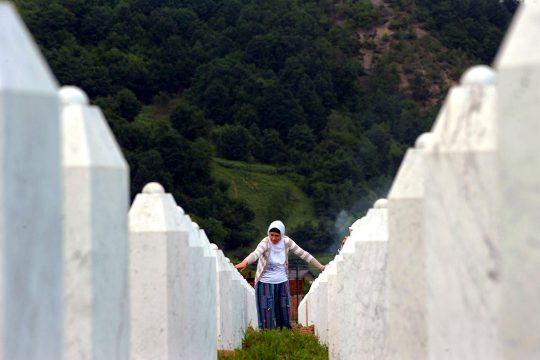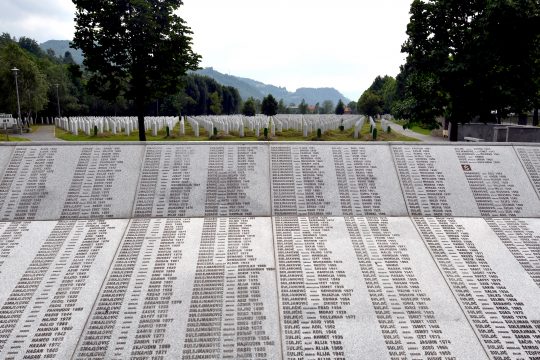Twenty years after the 44-month siege of Sarajevo, in which 1,500 children were killed, the young victims' parents anxiously await a ruling on the man they hold responsible.
Among the range of atrocities for which wartime Bosnian Serb leader Radovan Karadzic will be judged at The Hague this week is the relentless sniping and shelling of Bosnia's capital, from April 1992 to November 1995, which killed at least 10,000 people.
Described as a "medieval hell" by prosecutors, the city under siege saw its 350,000 mostly Muslim inhabitants struggle to get food, water and heating as they came under almost daily attack from Serbs in the surrounding mountains.
The families of the youngest victims are still struggling with their losses -- and hope Thursday's long-awaited ruling on alleged mastermind Karadzic will finally give them a degree of closure.
"Anxiety is growing as that historic day approaches," said Fikret Grabovica, who heads an association for parents of the dead children and plans to travel to The Hague to learn the 70-year-old's fate.
"Our wounds still bleed, despite all these years, and I hope he will be given a deserved punishment that will bring us some peace."
The ruling comes 23 years and four days after Grabovica's 11-year-old daughter Irma was killed by shelling in front of their family home while playing with friends.
Spreading terror -
Bosnia's inter-ethnic war had broken out a year earlier as Yugoslavia fell apart, and Serb forces hoped the siege would squeeze their Muslim foes into surrendering.
Karadzic's chargesheet says the campaign of sniping and shelling was designed "to spread terror among the civilian population".
Grabovica said many of the young victims were targeted during supposed truces.
"They were often in groups, at school or on the way to school. Many were killed by snipers which means it was deliberate," he told AFP.
On November 9, 1993, one group of schoolchildren was waiting to enter an improvised classroom on the ground floor of a residential building protected by concrete panels.
As the youngsters were about to walk into class and another group was preparing to file out, a shell exploded at the entrance, killing three children and a teacher and wounding another 21.
Among the dead was six-year-old Fedja Salkic, whose motionless body was found by his still-traumatised older brother Adis.
Fedja was laid to rest, along with hundreds of other war dead, in a former football field turned cemetery in Sarajevo.
Ahead of the decision on Karadzic from the International Criminal Tribunal for the former Yugoslavia (ICTY), the boy's family placed white roses on his grave.
"A just sentence"
"We hope that the ICTY judges will have the courage to condemn the Balkans' most notorious war criminal to life imprisonment," said Edin Salkic, fighting back tears as he remembered his son.
He added, however, that "a just sentence would be to hand (Karadzic) over to the people, so that they can be his judge".
Another grieving parent, Ana Dlouhi, refuses to talk about the man blamed for the loss that still haunts her each day.
Her son Dario, a 14-year-old who played guitar and "loved life", was at Sarajevo's Markale market with his friend Adnan on August 28, 1995 when a shell exploded, killing 43 people.
Adnan died on the spot, while doctors fought for three days, unsuccessfully, to save Dario.
The Markale attack prompted NATO to launch air strikes against Serb positions a day before Dario died, paving the way for a peace deal reached in November 1995.
But Dlouhi said she was furious when she saw the NATO planes.
"Two days before the war effectively ended, I lost the dearest person," she said bitterly.




